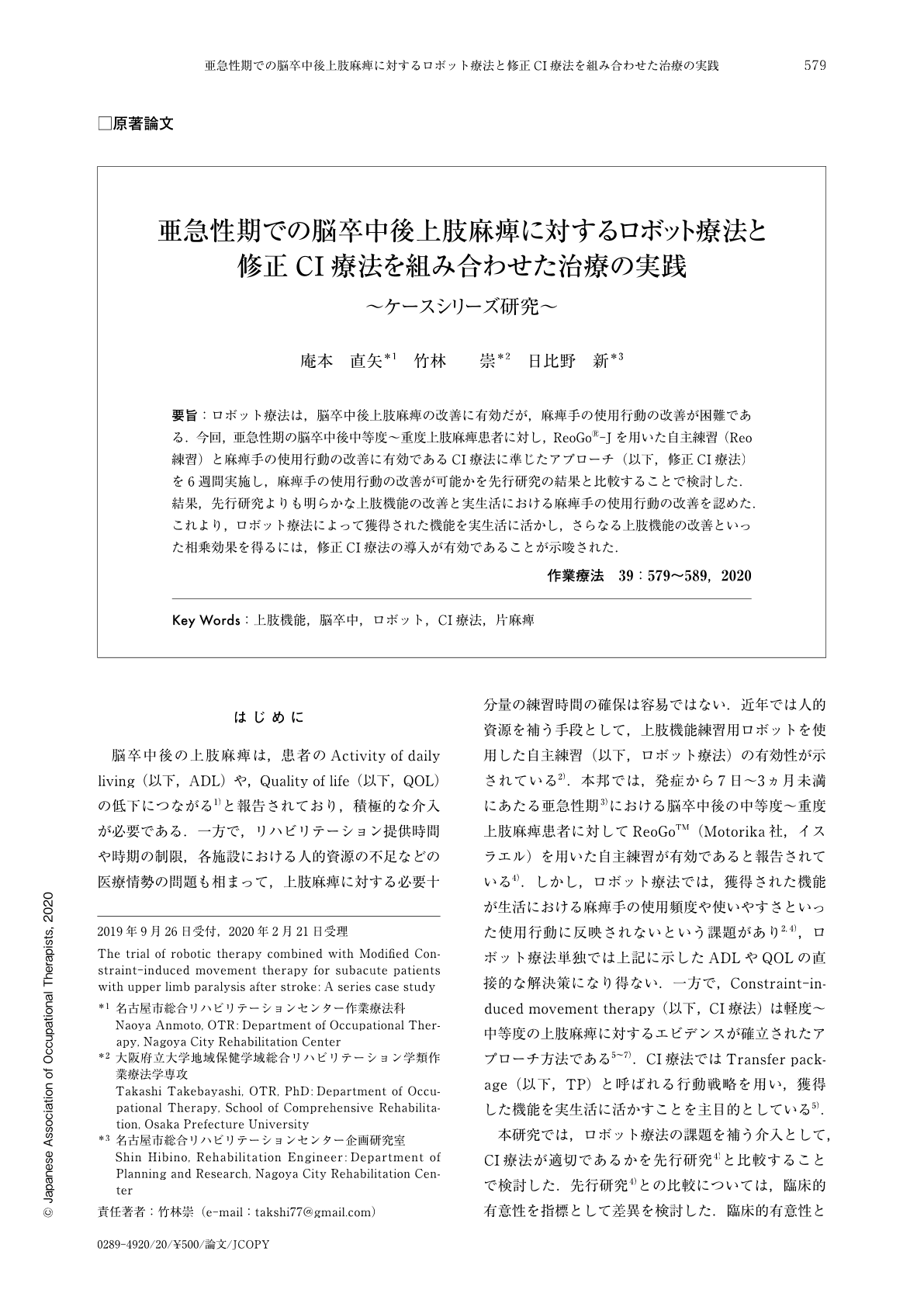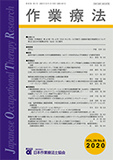Japanese
English
- 販売していません
- Abstract 文献概要
- 1ページ目 Look Inside
- 参考文献 Reference
- サイト内被引用 Cited by
要旨:ロボット療法は,脳卒中後上肢麻痺の改善に有効だが,麻痺手の使用行動の改善が困難である.今回,亜急性期の脳卒中後中等度〜重度上肢麻痺患者に対し,ReoGo®-Jを用いた自主練習(Reo練習)と麻痺手の使用行動の改善に有効であるCI療法に準じたアプローチ(以下,修正CI療法)を6週間実施し,麻痺手の使用行動の改善が可能かを先行研究の結果と比較することで検討した.結果,先行研究よりも明らかな上肢機能の改善と実生活における麻痺手の使用行動の改善を認めた.これより,ロボット療法によって獲得された機能を実生活に活かし,さらなる上肢機能の改善といった相乗効果を得るには,修正CI療法の導入が有効であることが示唆された.
Robotic therapy has shown promise for improving arm function after stroke. However, it is difficult to improve the behavior of the affected arm in daily life. This study provided modified forms of original Constraint-induced movement therapy (modified CIMT) which is effective for the affected arm and self-training using ReoGo®-J (Robotic therapy) during six weeks for subacute patients with moderate to severe upper limb paralysis after stroke. We examined whether this approach could improve the movement of the affected arm by comparing with previous studies. As a result, this approach improved not only arm function but also affected arm behavior in daily life compared with previous studies. These results suggest that combining modified CIMT with robotic therapy helps patients regain upper limb function in their daily lives.

Copyright © 2020, Japanese Association of Occupational Therapists. All rights reserved.


